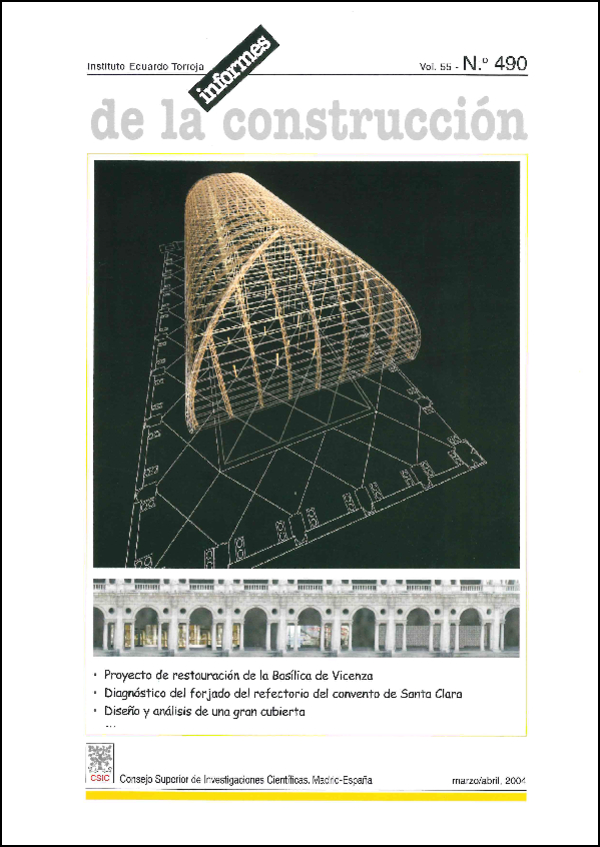Fundamental aspects for a strutural strengthening design
DOI:
https://doi.org/10.3989/ic.2004.v55.i490.419Abstract
This article summarizes and analyses, conceptually, some ofthe fundamental aspects that should to be considered whenundertaking a work of structural strengthening. It is describedthe rational process that must be taken to decide if astrengthening is necessary or not. A conceptual analysis ofdifferent alternatives of strengthening, its types and itsmobilization is illustrated. It is also summarized the requiredverifications doing a special attention to the union betweenthe reinforcement and the original structure as well as to thepossibilities that offer the combined use of in situ tests withthe numerical simulation and, finally, analyses some aspectsrelated to the use of modern equipments for the strengthening,as synthetic resins and other products. In conclusion, the firstthing that the technician must consider it is if thereinforcement is necessary or not and, in affirmative case, tolimit the parts or members of the structure to becomestrengthened as well as the resistant properties that must beimproved, paying special attention to the election of the typeof strengthening and the materials to use. It implies a hightechnical exigency in knowledge of materials, in methods ofanalysis and verification to the technician responsible of thestrengthening. On the other hand, the economy of means andthe sustainability, force to obtain the highest collaboration ofthe original structure, which is a determinant factor in thedesign of the strengthening.
Downloads
Downloads
Published
How to Cite
Issue
Section
License
Copyright (c) 2004 Consejo Superior de Investigaciones Científicas (CSIC)

This work is licensed under a Creative Commons Attribution 4.0 International License.
© CSIC. Manuscripts published in both the print and online versions of this journal are the property of the Consejo Superior de Investigaciones Científicas, and quoting this source is a requirement for any partial or full reproduction.
All contents of this electronic edition, except where otherwise noted, are distributed under a Creative Commons Attribution 4.0 International (CC BY 4.0) licence. You may read the basic information and the legal text of the licence. The indication of the CC BY 4.0 licence must be expressly stated in this way when necessary.
Self-archiving in repositories, personal webpages or similar, of any version other than the final version of the work produced by the publisher, is not allowed.















